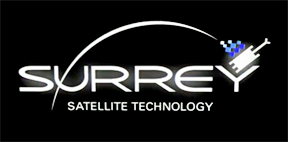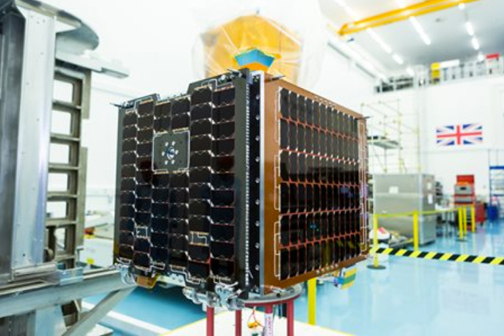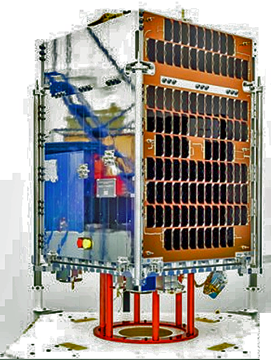
Surrey Satellite Technology Ltd. (SSTL) has confirmed the successful launch of CARBONITE-2, an Earth Observation technology demonstration mission owned and operated by SSTL, and of the Telesat LEO Phase 1 communications satellite, an important milestone in Telesat’s plans to deploy a global LEO constellation that will revolutionize broadband communications services around the world.

These two small SSTL satellites were launched into a 505 km. sun-synchronous orbit (SSO) on board a PSLV launch vehicle from the Satash Dhawan Space Center in Sriharikota, India, on January 12, 2018, at UTC/GMT 03:59. Following separation from the launch vehicle, SSTL is pleased to confirm that successful contact was made with both satellites and all initial system checks for both spacecraft are nominal.

CARBONITE-2 flight-ready at SSTL. Image credit SSTL/Beaucroft Photography
CARBONITE-2 is a technology demonstration mission that will demo a low cost video-from-orbit solution using Commercial-Off-The-Shelf (COTS) technologies. The 100 kg. spacecraft flies a COTS telescope and HD video, both of which have been adapted for a space environment and integrated into a custom built framework. The imaging system is designed to deliver 1m resolution images and colour HD video clips with a swath width of 5km.
Under a contract announced in November 2017, SSTL will supply British company Earth-i with CARBONITE-2 data for proving tasking, downlinking and image processing in preparation for a constellation of five CARBONITE series satellites.

Photo of the Telesat LEO Phase 1 satellite. Image credit SSTL/Kathryn Graham.
CARBONITE-2 is the second technology demonstration satellite in the series to be launched by SSTL; the first, CARBONITE-1, was launched in 2015 and achieved full mission success by demonstrating the concept of a low-cost COTS video-from-orbit solution. The CARBONITE-2 satellite flies enhanced avionics to provide increased data storage, faster data downlink, improved pointing accuracy, and a full color HD video camera. SSTL’s CARBONITE series of spacecraft have been specifically designed for large constellations. The simplified, rapid-build platform design incorporates SSTL’s flight-proven avionics and a large payload accommodation area to fly a variety of EO sensors.
The Telesat LEO Phase 1 satellite, which will allow Telesat to test key performance parameters of its next generation global LEO constellation, has a mass of 168kg and was manufactured by SSTL in the UK. SSTL’s spacecraft operators will complete commissioning and orbit-raising maneuvers for the satellite from SSTL’s Spacecraft Operations Centre in Guildford. Once the Telesat LEO Phase 1 satellite has reached its final planned orbit, command will be handed over to Telesat for in-orbit operation using the Ka band payload from Telesat’s ground station at Allan Park in Canada.
Sir Martin Sweeting, Executive Chairman of SSTL, said that this launch marks the start of two new pioneering missions: a technology demonstration for CARBONITE-2 and the initial deployment of Telesat’s global LEO constellation with their Phase 1 LEO satellite. He was particularly pleased that SSTL’s space technology expertise will be advancing NewSpace applications in both high throughput broadband and low cost video-from-orbit.


